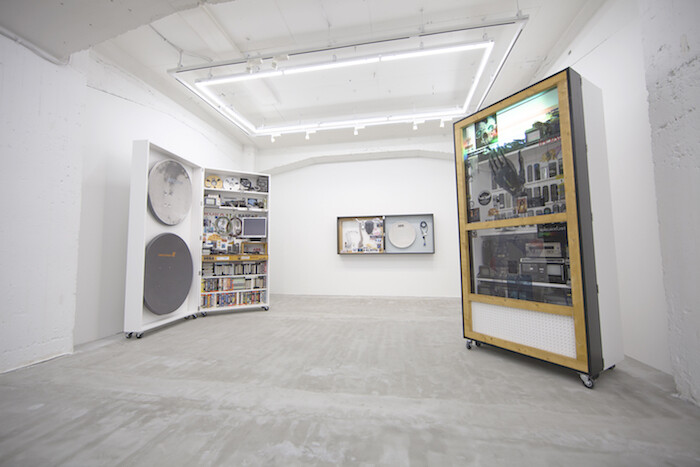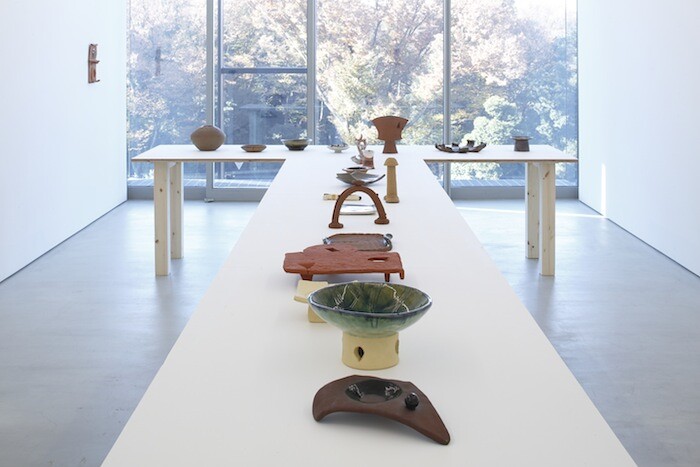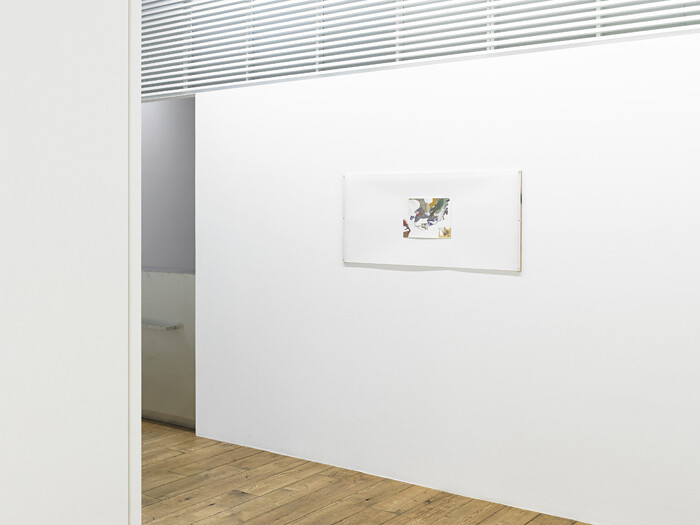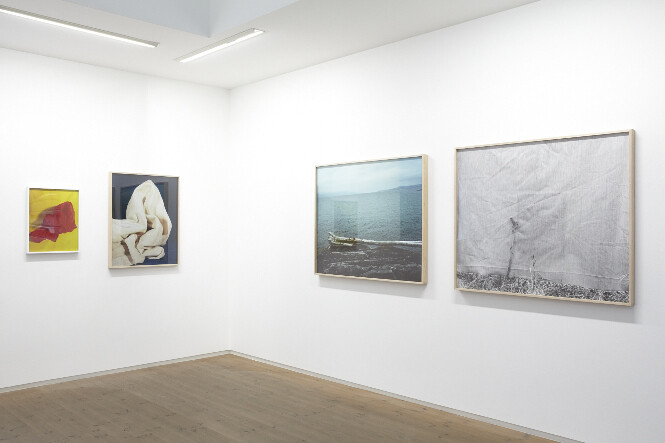Categories
Subjects
Authors
Artists
Venues
Locations
Calendar
Filter
Done
May 24, 2022 – Review
Chim↑Pom from Smappa!Group’s “Happy Spring”
Jason Waite

A number of art exhibitions have, in recent years, disrupted cultural institutions in Japan. Take the allegations of censorship at the 2016 MOT Annual, which resulted in two curators being let go, or the temporary closure of the 2019 Aichi Triennale after violent threats were made against its organizers. To this list can be added “Happy Spring” at the Mori Art Museum, the work of the six-person, Tokyo-based collective founded in 2005 and known at the time of the show’s opening as Chim↑Pom. In late April, the group changed its name to Chim↑Pom from Smappa!Group in response to the institution’s refusal of sponsorship from its long-time collaborator Smappa!Group, an organization which runs a number of “host clubs” in Tokyo. The museum claimed this was a “branding” issue; the artists argued that it could be regarded as “discrimination against nightlife workers”—an already stigmatized section of Japanese society. All that can be said with certainty is that this group’s first retrospective, curated by Kenichi Kondo, was long overdue and worth undertaking, although its longer-term effects remain uncertain.
The pulsing, unruly show at Mori Art Museum centers around a replica street shaped like an ouroboros that runs throughout the institution. That this …
November 16, 2017 – Review
Joep van Liefland’s “Time To Die”
Nick Currie

It felt entirely appropriate to see “Time To Die”— Joep van Liefland’s first solo exhibition in Japan—on Halloween. As evening fell, the Blade Runner-esque streets around Nanzuka Gallery began to seethe with a human froth of staggering zombies, gibbering corpses, and wounded cosplay nurses. Despite their macabre costumes, the crowds of young people gathering in Shibuya were abuzz with youth and happiness; death never seemed more vital.
A similar paradox was at work in van Liefland’s show. In a hipsterish version of the Day of Judgment, dead video formats were resurrected and celebrated: cabinet installations displayed battered satellite dishes, coiled SCART cables, assorted ugly remote controls, and spools of outmoded ferrous tape. Mounted on pegboard were stickers for half-forgotten electronics brands, prosthetic limbs, bionic skulls, generic batteries, faded adverts for once-futuristic formats.
Beginning with the collage Untitled (Theology of technology 7) (2015)—a juxtaposition of images of color wheels, space tech, classical Greek statuary, and mineralogy—the exhibition led into what appeared to be a 1980s video repair shop, but on closer inspection turned out to be an assemblage of installations featuring remote controls in a light box. Here—thinking of the protests that greeted Omer Fast’s recent exhibition “August” at James Cohan Gallery—I began …
May 19, 2017 – Review
Maria Taniguchi
Cameron Allan McKean

Earth-stuff goes through myriad transformations on its path to usefulness in our world. Soil, stone, water, oil, plants, animals, and the rest all pass through processes of cleaning, smoothing, separating, reconstituting. And at the end of that violence is an exquisite, terrifying flatness: one that expresses itself through identical buildings, garments, and foods; through the identical spaces conveyed by this screen and the identical blackness inside it.
From her Manila studio, Maria Taniguchi makes work about the extraction of Earth-stuff—about its flattening and the entanglement of humans and nonhumans this transformation is contingent on. Born in the Philippines in 1981, Taniguchi works in installation, sculpture, and video, but she is best known for her nearly decade-long series of untitled paintings depicting a pattern of identical black bricks. Perhaps the plural is unnecessary: it’s really a single brick, roughly two by six centimeters, outlined in graphite on canvas or linen, and filled with black and gray acrylic. This brick repeats itself through her paintings, which seem to vary only by the size of their frame (from centimeters to meters) and the position they occupy in a gallery or studio. Her grid is uniform and endlessly scalable.
This brick helped win Taniguchi the Hugo …
January 12, 2017 – Review
J.B. Blunk
Cameron Allan McKean

Pottery is place, folded and fired. It is soil, stone, flora, topography, and climate, massaged by human tradition and technique. In Japan, the placeness of ceramics has been taken to an extreme with local variations in style proliferating across the island nation. This sensitivity to place and materials echoes in the work of the late Californian craftsman and artist James Blain Blunk (1926–2002), whose pottery is on display for the first time in Japan since the 1950s.
Though best known for the semi-functional redwood sculptures he carved with a chainsaw in the 1960s and ’70s, Blunk was also a painter, weaver, jeweler, woodworker, and, briefly, part-time sheep wrangler in the course of a restless career. But before all this, Blunk was among the first westerners to study under Japan’s master potters. On furlough from the Korean War, to which Blunk had been drafted in 1949, he met the artist Isamu Noguchi by chance in a Mingei (folk art) store in Tokyo, an encounter which would lead him to some of Japan’s most revered craftsmen. When Blunk was discharged from service in 1952 he became an apprentice in Rosanjin Kitaoji’s Kamakura studio, south of Tokyo, before leaving to study for eighteen months …
September 3, 2015 – Review
Andrew Kerr’s “The gallery is beside a church, apartments and a small park with fountain”
Stuart Munro

Tokyo’s Rat Hole Gallery is beside a church, apartments and a small park. Removed from the passing traffic, stairs from the street lead to a basement entrance hidden behind frosted glass. By locating them so precisely in the show’s title, Glasgow-based Andrew Kerr suggests the new paintings for his first Japanese solo exhibition have a more intimate relationship with the city they now call home, despite their origin being very distant.
This show picks up where his previous one—“The Other Shop” at Glasgow’s The Modern Institute in 2014—left off. Bringing three dimensions to painting, fixed objects are arranged to document chance moments. It is open to interpretation whether they are seen as flat examinations of a landscape or as landscapes themselves—are these objects or pictures? As in “The Other Shop” the emphasis is on context. Yet in a city like Tokyo, where everything is equally important and simultaneously forgettable, context is a vague and uncertain principle.
Next to the entrance, a single painting on Japanese paper hangs like a reconsidered ukiyo-e, bereft of the figures and scenery we associate with it. The main space holds five small canvases whose sequence is interrupted by four larger, more sculptural works positioned at eye-level (all …
October 1, 2014 – Review
Sarah Conaway and Melanie Schiff
Taro Nettleton

To coincide with his second exhibition in Japan, “BC RIPS” at Tokyo’s Taka Ishii Gallery, Sterling Ruby has curated a show of photographs by Los Angeles artists Sarah Conaway and Melanie Schiff. Held at the small Taka Ishii Gallery Modern space in Roppongi district and featuring just five images–one of a fallen tree and another of a plant from Schiff, and three photographs of fabrics variously folded and reposed from Conaway—it’s a difficult show.
Sarah Conaway’s three works are displayed across two different walls of the gallery. Two color images, Red and Yellow Fold (2011) and White and Blue Fold (2014), hang on one wall, while the third work, the black-and-white Religious Experience (2008), hangs on another. Conaway shoots mundane subjects that lack immediately apparent content. In doing so, and like those artists associated with the “Pictures” exhibition of 1977, organized by Douglas Crimp and credited with identifying a then new postmodernist approach to image-making, she explores the instability of meaning in any representation, even a photograph, which, as Roland Barthes famously pointed out, is assumed to be without code.
Simultaneously deploying the tropes of painting, photography, and sculpture, Conaway’s folded fabrics resist easy categorization. They are, however, consistent with Conaway’s studio-based …
January 22, 2012 – Review
Ei Arakawa and Sergei Tcherepnin
Kevin McGarry

The show ended in chaos, typically. On Saturday, January 14th, two incongruous flutists drifted into the exhibition space filled with visitors bending and shaking the cacophonous sculptures. It’s a scene that is only an amplified version of any given afternoon during the exhibition, throughout which the artists, Ei Arakawa and Sergei Tcherepnin, spent three hours daily on-site, demonstrating their conceptual instruments installed around the room.
With the series of six works each called Looking at Listening (2011)—five hung on the walls and one larger piece fixed to the floor—Arakawa and Tcherepnin created an environment where visitors could explore listening as a kinetic and potentially synesthetic process. The works consisted of metal panels imprinted with images and mounted on felt-draped devices—cool, clean, basic elements assembled like a science fair project, belying neither their mid-century performance art roots nor their unabashed functionality.
The images were sourced from the New York Public Library, where the artists found them catalogued in a file called “Listening” or in other categories which one could consider visual variations on the theme: “Conversation,” “Investigation,” “Town Meetings,” “Audience 1960s–70s.” In each, the act of listening is ostensibly underway, whether it’s a ruddy bureaucrat sticking his cocked ear through gilded doors, …
October 19, 2011 – Review
Sharon Lockhart’s “Podworka”
Lyra Kilston

In a dim, narrow courtyard, a pothole, ringed by pieces of broken concrete, has filled with dark water. The camera lingers on this scene in one unmoving five-minute shot, as two young boys meander around the confined concrete area, in Sharon Lockhart’s most recent film, Podworka (2009). One of the boys rides his small bicycle up to the pothole and regards it with intent curiosity. He starts an absorbing game of repeatedly dipping the bicycle’s wheels into the water and reacts by gleefully clapping his hands and laughing—the dirty puddle, an eyesore and inconvenience to some, is to him a toy and a marvel.
Filmed in the city of Lodz, Poland, Podworka consists of six scenes of children playing in different industrial-looking locations, and each scene is a static five-minute take. In Polish, Podworka translates to yard or backyard, and in this case, they are mostly blighted or graffiti-strewn, with a scraggly weed or two. Lockhart seems to have chosen her locations based on their function as impromptu playgrounds, and it is unclear whether she surreptitiously filmed many hours of footage to capture the children’s games, or asked them to play in front of her camera. The children’s blithe patterns of …